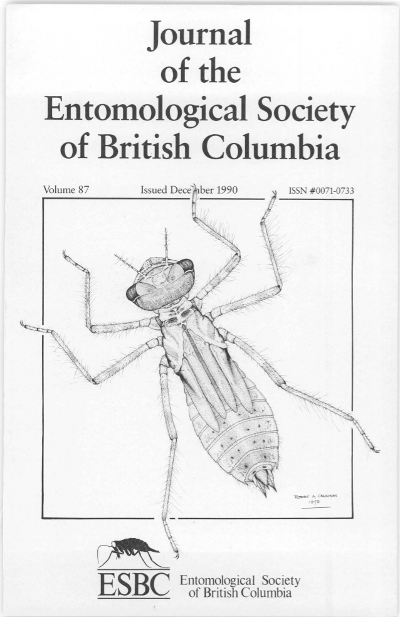Role of Needles in Close-range Host Selection by the White Pine Weevil on Sitka Spruce
Abstract
The white pine weevil, Pissodes strobi Peck, is apparently induced to feed and oviposit on the cortex of leaders of Sitka spruce, Picea sitchensis (Bong.) Carr, in part through the influence of needles. In laboratory feeding bioassays, mature needles were shown to contain non-volatile feeding deterrents, which probably direct weevils away from them to feed on the bark. In addition, weevils fed more frequently on agar bark discs with spruce needles or toothpicks inserted in them than on control discs, suggesting that the needles have a positive thigmatactic effect on close range host selection.Downloads
Issue
Section
License
Authors who publish with the Journal of the Entomological Society of British Columbia agree to the following terms:
-Authors retain copyright and grant the journal right of first publication with the work simultaneously licensed under a Creative Commons Attribution License that allows others to share the work with an acknowledgement of the work's authorship and initial publication in this journal.
-Authors are able to enter into separate, additional contractual arrangements for the non-exclusive distribution of the journal's published version of the work (e.g., post it to an institutional repository or publish it in a book), with an acknowledgement of its initial publication in this journal.
-Authors are permitted and encouraged to post their work online (e.g., in institutional repositories or on their website) prior to and during the submission process, as it can lead to productive exchanges, as well as earlier and greater citation of published work (See The Effect of Open Access).


